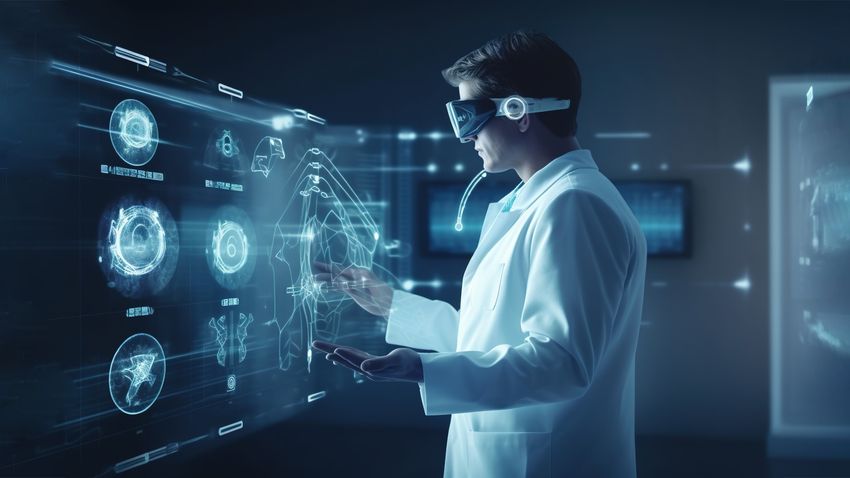Artificial Intelligence (AI) is revolutionizing healthcare, providing faster and more accurate diagnosis of diseases. AI-powered medical diagnosis systems use machine learning (ML) models to analyze medical data, helping doctors make better-informed decisions. In this article, we will explore the step-by-step process of building an AI-powered medical diagnosis system. 🚀
🔬 Step 1: Understanding the Requirements
Before diving into development, it’s crucial to understand the key objectives of the AI-powered medical diagnosis system. Some of the essential aspects to consider include:
- ✅ Type of diseases: What medical conditions will the AI diagnose (e.g., cancer, diabetes, heart disease)?
- ✅ Data sources: Will the system use X-rays, MRIs, blood reports, or electronic health records (EHRs)?
- ✅ Regulatory compliance: Ensure compliance with healthcare regulations like HIPAA (USA) or GDPR (EU) for patient data protection.
🏗️ Step 2: Collecting & Preprocessing Medical Data
AI models require large volumes of quality data to function effectively. Here’s how to collect and prepare the data:
📊 Data Collection
- Medical datasets can be obtained from sources like:
- Public datasets: Kaggle, NIH, WHO, and other open-source platforms.
- Hospitals & Research Institutes: With ethical approval and patient consent.
- Wearable Devices: Smartwatches and health monitoring devices.
🏥 Data Preprocessing
- Cleaning: Remove duplicate, irrelevant, or corrupted data.
- Normalization: Standardize formats (e.g., converting text reports into structured data).
- Augmentation: Increase dataset size using techniques like rotation, zoom, and contrast adjustment (for image-based diagnosis).
🤖 Step 3: Choosing the Right AI Model
Depending on the type of data and diagnosis, different AI techniques can be used:
🔵 Machine Learning (ML) Models
- Decision Trees – Simple models for structured medical data.
- Random Forest – Used for classifying diseases with multiple symptoms.
- Support Vector Machines (SVM) – Great for medical text classification.
🔴 Deep Learning (DL) Models
- Convolutional Neural Networks (CNNs) – Ideal for image-based diagnosis (e.g., X-rays, MRIs).
- Recurrent Neural Networks (RNNs)/LSTMs – Used for time-series health data (e.g., ECG signals).
- Transformer Models (like BERT, GPT) – Useful for analyzing clinical notes and reports.
Tools & Frameworks: TensorFlow, PyTorch, Scikit-learn, Keras, OpenCV
🏋️♂️ Step 4: Training & Validating the Model
⚙️ Training the Model
- Use 80% of the dataset for training and 20% for testing.
- Employ data augmentation techniques to prevent overfitting.
- Choose an optimization algorithm like Adam or SGD for model efficiency.
📈 Validation & Performance Metrics
- Accuracy: Measures correct predictions vs. total cases.
- Precision & Recall: Useful for imbalanced datasets (e.g., rare diseases).
- F1 Score: Balances precision and recall.
- AUC-ROC Curve: Determines the model’s ability to distinguish between disease-positive and disease-negative cases.
🖥️ Step 5: Deploying the AI System
Once trained, the AI model needs to be integrated into a user-friendly system:
🌍 Deployment Options
- Cloud-based API (AWS, Google Cloud, Azure) – Scalable & secure.
- Edge AI (On-device processing) – For real-time analysis on portable medical devices.
- Web or Mobile App – Provides accessibility to doctors and patients.
🔄 Continuous Learning & Updates
- Implement feedback loops to improve model performance over time.
- Allow human-in-the-loop (HITL) for doctors to validate AI suggestions.
- Regularly update the model with new medical data.
⚖️ Step 6: Ethical Considerations & Challenges
🏛️ Regulatory Compliance
- HIPAA (Health Insurance Portability and Accountability Act) – Protects patient data in the U.S.
- GDPR (General Data Protection Regulation) – Ensures privacy rights in the EU.
- FDA & CE Approvals – Required for AI-based medical devices.
🚧 Challenges
- Bias in AI Models: Ensure diverse datasets to avoid misdiagnosis in certain demographics.
- Data Privacy & Security: Use encryption and anonymization techniques.
- Doctor-AI Collaboration: AI should assist, not replace, human doctors.
🔮 Future of AI in Medical Diagnosis
The future of AI in healthcare looks promising with advancements like:
- AI-powered robotic surgery 🤖
- Real-time wearable health monitoring ⌚
- Personalized treatment plans with AI 📋
- Faster drug discovery using AI 🧪
🎯 Conclusion
Building an AI-powered medical diagnosis system requires a structured approach, combining data science, machine learning, and healthcare expertise. From collecting medical data to training AI models and deploying them in a real-world setting, each step is crucial in ensuring the accuracy and reliability of the system. While challenges like data privacy and model bias exist, the potential of AI in healthcare is game-changing and continues to grow every day. 🚀


